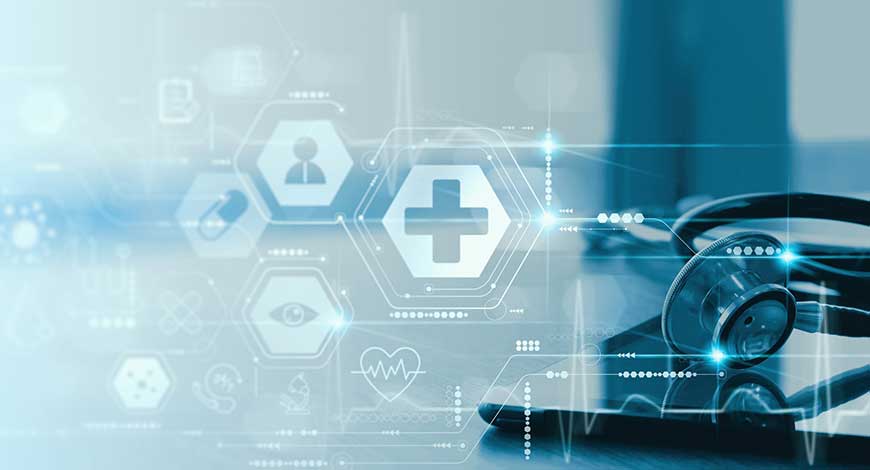Headlines of The Day
India revolutionizing healthcare toward citizen-centric model

In 2047, when India completes its 100 years of independence, one of the key focus areas should be to provide universally accessible, high-quality and holistic healthcare to its citizens. A healthy population is necessarily the backbone of a robust nation. This will require us to put the citizen at the centre of the healthcare ecosystem, empowering them to take charge of their health and well-being.
India’s rising digital prowess is well known to the world. With more than 86.6 crore internet users, it is the second-largest internet-consuming population with an average data consumption of 18 GB per month. India’s populace is consuming more and more services digitally which has come on the back of the government’s decade-long effort to build the Digital Public Infrastructure (DPI) such as Aadhaar, Digilocker, UPI etc which has fuelled the private sector to unleash their enterprise spirits. On the back of DPI, India has been able to achieve its financial inclusion target in just a decade instead of half a century.
A similar story is being replicated in healthcare — India is reorienting its healthcare system towards a holistic healthcare model, the Ayushman Bharat way. This approach prioritises the health and well-being of citizens, emphasising preventive care, primary healthcare, and holistic wellness. One of the key pillars of the Ayushman Bharat is the Ayushman Bharat Digital Mission (ABDM). The overarching vision of the mission is to establish a fully digitised and interoperable healthcare ecosystem in the country.
ABDM will introduce trust, verifiability and interoperability in the healthcare ecosystem which will bring efficiency in the healthcare system of India. ABDM is creating three national registries in the healthcare ecosystem. First, the Ayushman Bharat Health Account (ABHA) for citizens, second, the Healthcare Professional Registry (HPR) for healthcare professionals including doctors, nurses, allied healthcare professionals, Ayush professionals etc., and third, the Health Facility Registry (HFR) for health facilities such as hospitals, labs, pharmacy, single doctor clinics etc. All these registries will act as a single source of truth for the ecosystem which can be used by citizens as well as providers.
Armed with these digital identities, ABDM is transforming these key stakeholders into Digital Citizens, Digital Healthcare Professionals and Digital Health Facilities which will deliver as well as consume health services digitally. Furthermore, under ABDM, the three gateways that are being built will take India’s health ecosystem to a whole new paradigm. These are, Health Information Exchange and Consent Manager (HIE-CM), Unified Health Interface (UHI) and National Health Claims Exchange (NHCX).
The core function of all three gateways is to enable interoperability. While HIE-CM focuses on interoperability in health data, the UHI focuses on interoperability of health services and the NHCX focuses on interoperability of insurance claims. These gateways will bring radical changes in the healthcare ecosystem, beginning from bridging the information asymmetry with registries and services layer, to standardised and cost-effective claim processing with NHCX and eventually leading to patient ownership of their health record digitally with HIECM.
With these building blocks in place, ABDM is anchoring the creation of a national digital health ecosystem — the role of public-private partnership is crucial to achieving these goals. While the government is focusing solely on the creation of the Digital Public Infrastructure in health including registries and gateways, the room is left wide for the private sector to innovate and build citizen as well as provider-facing applications.
India’s tryst with digital healthcare has already been proven at scale. The COWIN platform which had helped in delivering vaccine doses to more than 100 crore citizens in a short span of 11 months is a global success story. As a result of this, each citizen of the country has at least one digital health record, propelling COWIN to be one of the world’s largest digital health information providers.
Another success story from the same time has been the National Tele-Medicine Service, eSanjeevani. It provides free-of-cost access to quality health services in remote areas as well as in the comfort of homes. With over 57 per cent of beneficiaries as women and around 12 per cent of beneficiaries being senior citizens, eSanjeevani is also ensuring health equity to achieve Universal Health Coverage.
Furthermore, the record generated through COWIN or the digital prescription produced through Teleconsultation is linked with citizens’ ABHA. As of today, more than 58 crore ABHAs have been generated and more than 35 crore health records have been linked with respective ABHAs. The new-age companies are building new and innovative products for customers using the digital public infrastructure of ABDM. As citizen’s healthcare data is getting digitised, India will see an explosion of AI-based solutions, which will usher in the era of personalised care. As the nation continues on this transformative path, it is poised to emerge as a global leader in citizen-centric healthcare delivery.
ABDM is harnessing the power of technology to enable both government as well as private sector to enhance healthcare delivery, promote health equity, and facilitate preventive and promotive healthcare. This entire DPI for healthcare is also exportable in nature, therefore India can pave the way for other nations, particularly in the Global South, to take inspiration in creating a citizen-centric approach to healthcare and realising the vision of universal health coverage by 2047. MillenniumPost












